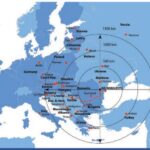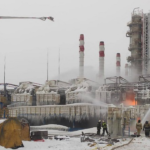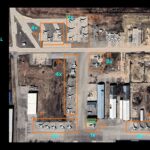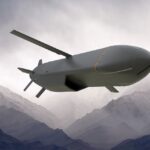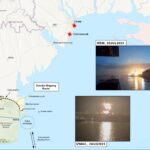Russia continues the wholesale militarization of the Crimea peninsula with the upcoming deployment of nuclear-capable long-range Tu-22M3 bombers (NATO reporting name: Backfire-C) to Hvardiyske/Gvardeyskoye air base. The airfield’s large aircraft revetments and logistics facilities can host at least 20 Backfires. With the Backfire eyed as a future launching platform for the Kinzhal hypersonic aero-ballistic missile, Russia intends to increase pressure on the U.S. Aegis Missile Defense systems (Ashore and Afloat) in Europe.

Hvardiyske/ Gvardeyskoye Air Base IMINT via T-Intelligence based on Digital Globe and Planet Labs imagery
On March 18, Viktor Bondarev, the chairman of the defense and security committee of Russia’s upper parliament house, announced that Moscow will deploy nuclear-capable Tu-22M3/Backfire-C bombers to Crimea in response to the U.S. missile defense systems in Romania.
Over the past years, NATO Enhanced Air Policing fighter jets have intercepted several Backfires over the Black Sea, which simulated mock bombing runs in Romania’s flight information region. Recently, the aircraft also served in Syria as a frontline bomber against unsophisticated ground targets. The Backfire was originally developed for the Soviet Air Force and Navy to prosecute targets – particularly maritime targets like U.S. carrier strike groups – in peripheral-range missions. The internal weapons bay and external pylons can carry up to 24,000 kg of ordnance, including nuclear which makes the Backfire ideal for saturation strikes.
Russia plans to upgrade 30 of the 63 Backfires that are still in service to the advanced M3M variant. The M3M variant will be compatible with new generation ammunition such as the standoff/extreme-range Kh-32 cruise missile, the Kinzhal hypersonic aeroballistic missile, and potentially the 3M22 Zircon (NATO reporting name: SS-N-33) anti-ship hypersonic missile. Live trails of the first M3M commenced in mid 2018.
The Backfire deployment in Crimea will likely take the form a small-scale forward deployment from their home bases in Belaya (Irkutsk) and Shaykovka (Kaluga). However, our IMINT analysis concludes that – if needed – Hvardiyske/Gvardeyskoye air base could host 20-30 bombers on high-readiness and up to 50 aircraft for storage and maintenance.
Hvardiyske/Gvardeyskoye is the home base of the 37th Composite Aviation Regiment (CAR), which currently operates the Su-24M and Su-25 (NATO reporting names: Fencer and Frogfoot). 37th CAR Frogfoots were airborne during Russia’s blockade of the Kerch strait in October 2018 and Fencers have harassed U.S. and NATO vessels in the Baltic and Black Seas in the past. The 37th CAR was established as part of the 27th Compose Aviation Division (CAD) in 2014. The 27th CAD also commands the 38th Fighter Aviation Regiment in Belbek, which operates two Su-27P/SM (NATO reporting name: Flanker) squadrons. Like all forces deployed in Crimea, the units are subordinated to Russian’s 4th Air and Air Defense Army (Southern Military District) in Rostov-on-Don.
In response to the Russian plans, Washington deployed six B-52H Stratofortress strategic bombers from the 2nd Bomber Wing to the Royal Air Force base in Fairford on March 14, 2019. During their first major European exercise since 2003, the B-52s conducted theater familiarization flights and enhanced interoperability with NATO partners.
by HARM and Gecko
Founder of T-Intelligence. OSINT analyst & instructor, with experience in defense intelligence (private sector), armed conflicts, and geopolitical flashpoints.



